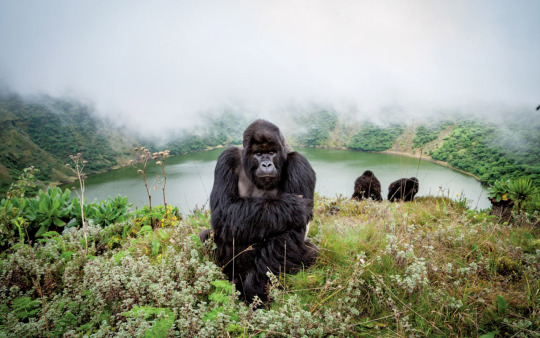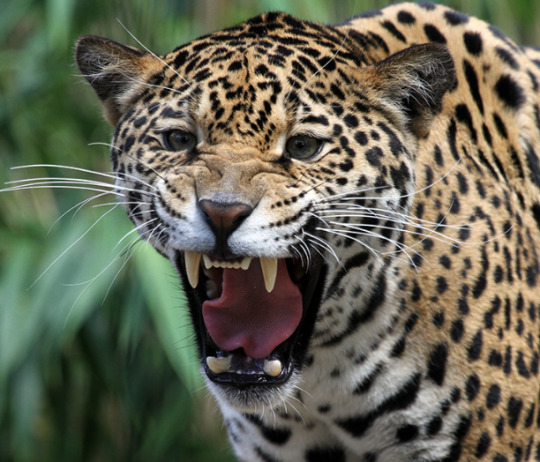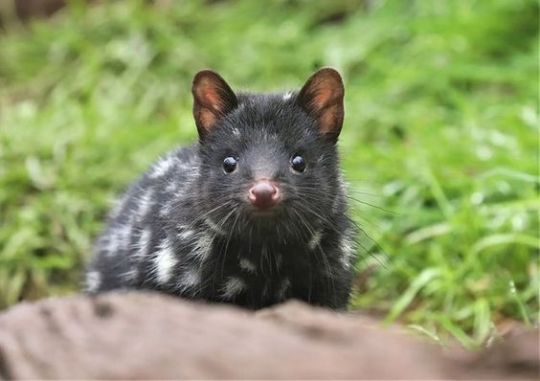#endangered animal
Explore tagged Tumblr posts
Note
have you done lake titicaca frogs? they’re such little freaks
Oh wow, I'd never heard of these! They are so silly looking :)


Photos thanks to Zoo Berlin & Joel Sartore from National Geographic!
#endangered species#south american frog#lake titicaca#lake titicaca frog#titicaca water frog#endangered animal#endangered#frog#frogs#south american wildlife#anura#amphibian#amphibians#animal polls#poll blog#my polls#animals#polls#tumblr polls
154 notes
·
View notes
Text
Snowy Owl

The snowy owl also known as the polar owl, the white owl and the Arctic owl. They are a large, white owl of the true owl family.

Snowy owls are native to the Arctic regions of both North America and the Palearctic, breeding mostly on the tundra.

It has a number of unique adaptations to its habitat and lifestyle, which are quite distinct from other extant owls.

One of the largest species of owl, it is the only owl with largely white plumage. Males tend to be a purer white overall while females tend to more have more extensive flecks of dark brown. Juvenile male snowy owls have dark markings that may appear similar to females until maturity, at which point they typically turn whiter. The composition of brown markings about the wing, although not foolproof, is the most reliable technique to age and sex individual snowy owls.

Most owls sleep during the day and hunt at night, but the snowy owl is often active during the day, especially in the summertime.

The snowy owl is a nomadic bird, rarely breeding at the same locations or with the same mates on an annual basis and often not breeding at all if prey is unavailable

Snowy Owl
#snowy owl#owl#owls#nature#nature photography#nature facts#nature scene#animals#endangered animals#animal#endangered animal#snow white owl#beautiful animals#birds#bird
51 notes
·
View notes
Photo

One of the last refuges for mountain gorillas is Rwanda’s Volcanoes National Park, where nearby Singita Kwitonda Lodge is helping to protect the endangered animals through habitat restoration.
PHOTOGRAPH BY CHRIS WHITTIER
#chris whittier#photographer#mountain gorillas#national geographic#rwanda#volcanoes national park#singita kwitonda lodge#endangered animal#habitat restoration#nature#ape#gorillas
106 notes
·
View notes
Note
jaguar!
Oo, fun.

Jaguars are actually the cat with the strongest bite relative to their size, strong enough to crush the animal's skull that they're hunting without much effort. Even scarier, they choose to just kill and eat caiman because they're abundant in their ecosystem. You know, this thing.

Because they like to snack on caiman, it would be obvious that they're not adverted to water. In fact, they love it and use it often to cool off. They like it more than tigers, who are often known to also hang out in water sources.

'Black panthers' are actually just a jaguar with melanism. They're not a separate species of big cat, though it's commonly mistaken. Leopards with melanism are also called a black panther. Again, it's still just a different coat pattern mutation.

Jaguars are one of the 4 cats that can truly roar. Others, like cheetahs cannot do this because the hyoid bone is completely ossified. With jaguars, leopards, lions and tigers, their epihyoideum is stretchy and allows them to roar, though it revokes their ability to purr. (whereas it's the other way around in other cats) They're also near threatened, very close to being on the endangered species list because of habitat destruction and poaching. Hope this was as fun for you as it is for me! Images have links to their sources.
41 notes
·
View notes
Text

Animal of the Day:
Mountain Tapir
#animal of the day#learn more#endangered#endangered animal#endangered species#animal#animals#mountain tapir#tapir
2 notes
·
View notes
Photo

Eastern Quoll
📸Aussie Ark
4 notes
·
View notes
Text
conservation for little white boys
Little white boys are becoming an endangered species in this trying time. We need to raise money for little white boys before they die out as a species
#conservation#endangered#endangered animal#white boy#little white boy#sad#emotional#original mungeater content#original#art
2 notes
·
View notes
Text



NEW BONGO CALF AT DENVER ZOO!!!!!!
20K notes
·
View notes
Text
You’ve seen those photos of dogs snapped through catching a treat, with just the silliest faces? I see those and raise you: a tiger catching meatballs.


This is Kali, a Sumatran tigress at the Point Defiance Zoo & Aquarium in Tacoma.
#animal photography#zoo photography#my photography#funny animals#tiger#big cat#Sumatran tiger#endangered species#meat
16K notes
·
View notes
Text
European Hedgehog (Character AI)
I created an European Hedgehog Character Ai, who is friendly and energetic for a hedgehog, it loves to meet new people and spend time with them!
🦔Hedgehogs are one of my favourite animals. They are have a rather introverted lifestyle. So I created a personality more friendly and playful than the real ones, based on my impression of my IKEA toy hedgehog! They are so cute! Have fun! Do enjoy playing with my little cutie!
#character ai animal#hedgehog#cute hedgehog#🦔#European hedgehog#Endangered animal#character ai hedgehog
0 notes
Note
hi! can you do Emydoidea blandingii (blanding's turtle)
Absolutely!


Photos taken by Jessica Fliginger & Matt Serafini respectively.
#endangered animals#endangered#endangered animal#canada#canada wildlife#united states wildlife#blandings turtle#reptilia#testudines#cryptodira#turtle#emydidae#animal polls#poll blog#my polls#animals#polls#tumblr polls
65 notes
·
View notes
Text
"In one of Africa’s last great wildernesses, a remarkable thing has happened—the scimitar-horned oryx, once declared extinct in the wild, is now classified only as endangered.
It’s the first time the International Union for the Conservation of Nature (IUCN), the world’s largest conservation organization, has ever moved a species on its Red List from ‘Extinct in the Wild’ to ‘Endangered.’
The recovery was down to the conservation work of zoos around the world, but also from game breeders in the Texas hill country, who kept the oryx alive while the governments of Abu Dhabi and Chad worked together on a reintroduction program.
Chad... ranks second-lowest on the UN Development Index. Nevertheless, it is within this North African country that can be found the Ouadi Rimé-Ouadi Achim Faunal Reserve, a piece of protected desert and savannah the size of Scotland—around 30,000 square miles, or 10 times the size of Yellowstone.
At a workshop in Chad’s capital of N’Djamena, in 2012, Environment Abu Dhabi, the government of Chad, the Sahara Conservation Fund, and the Zoological Society of London, all secured the support of local landowners and nomadic herders for the reintroduction of the scimitar-horned oryx to the reserve.
Environment Abu Dhabi started the project, assembling captive animals from zoos and private collections the world over to ensure genetic diversity. In March 2016, the first 21 animals from this “world herd” were released over time into a fenced-off part of the reserve where they could acclimatize. Ranging over 30 miles, one female gave birth—the first oryx born into its once-native habitat in over three decades.
In late January 2017, 14 more animals were flown to the reserve in Chad from Abu Dhabi.
In 2022, the rewilded species was officially assessed by the IUCN’s Red List, and determined them to be just ‘Endangered,’ and not ‘Critically Endangered,’ with a population of between 140 and 160 individuals that was increasing, not decreasing.
It’s a tremendous achievement of international scientific and governmental collaboration and a sign that zoological efforts to breed endangered and even extinct animals in captivity can truly work if suitable habitat remains for them to return to."
-via Good News Network, December 13, 2023
#chad#abu dhabi#north africa#rewilding#endangered species#conservation#zoology#conservation biology#oryx#good news#hope#texas#big game#animals#endangered#environmentalism#environmental science#zoo#zoos#zoo animals
24K notes
·
View notes
Text
I need you all to appreciate how crazy it is to have watched the scimitar horned oryx go from a poster child for "it only exists in zoos" to merely endangered (not even critically endangered!) over my lifetime.
So many heroic people contributed ridiculous amounts of time and effort to make this captive breeding and reintroduction effort a success.
#conservation#biodiversity#good news#hope#reintroduction#endangered species#animal conservation#zoos prevent extinction#captive breeding#environment#positive news#positivity
3K notes
·
View notes
Text





So--long story short, a FedEx driver killed a rattlesnake that happened to be on someone's porch, not causing any immediate problems. This is an all too common practice here in the United States, where a significant portion of the population has the backwards idea that "the only good snake is a dead snake" and that the only way to deal with a venomous snake in the proximity of a house, or people in general, is to kill it. Never mind that snakes tend to move on if left alone, and that there are numerous entities that can be contacted to move the snake safely to another place if so desired, and that most bites occur when someone is harassing, handling, or trying to kill the snake.
Dr. Emily Taylor of California Polytechnic State University (@snakeymama on Twitter) has requested that people contact FedEx about their recent commercial glorifying the killing of the snake, which you can view here. I've included both her and my letters to the appropriate folks at FedEx. There are options for both email and snail mail correspondence, and the more people FedEx hears from about this appalling matter, the better.
It's 2024, almost 2025. We have tons of information on rattlesnake behavior and best practices in coexisting with them (to include training your dogs in snake avoidance). We know plenty about the importance they have in local ecosystems, and the devastation that has been done through people slaughtering them, sometimes in the thousands (I wrote about the ongoing problem of rattlesnake roundups and their inherent cruelty here.) There are multiple rattlesnake species that are endangered or otherwise threatened with extinction.
The vast majority of encounters with venomous snakes are benign, and the vast majority of bites come from someone (person, dog, etc.) confronting the snake that was just trying to defend itself. We've spent a lot of time in this country defaulting to killing anything that inconveniences us, but there are better ways to live safely in proximity to wildlife that don't involve violence. It just takes a little more effort and awareness, and most importantly a significant attitude change that no longer vilifies native wildlife simply trying to live their lives.
As Dr. Taylor mentioned, if you want to contact FedEx, here are your options:
"You can help by reposting this or by emailing to express your concern about the commercial: [email protected] and to the CEO at [email protected]. Or send letters to: Fred Smith, CEO Brie Carere, Executive Vice President and Chief Customer Officer Ryan Kelly, Vice President of Marketing FedEx Corporation 942 South Shady Grove Road Memphis, TN 38120 USA"
#animal death#cw animal death#animal cruelty#animal welfare#snakes#rattlesnakes#reptiles#herps#nature#wildlife#animals#ecology#endangered species#conservation#animal behavior#PSA#call to action#please reblog#important
3K notes
·
View notes
Text

BREAKING: New Jaguar Just Dropped!
A Center for Biological Diversity analysis of a trail camera detection by wildlife enthusiast Jason Miller confirms we have a new jaguar in Arizona, making it the 8th jaguar documented in the U.S. Southwest in the past 3 decades. The rosette pattern on each jaguar is unique, like a human fingerprint, and it enables identification of specific animals. The pattern shows this jaguar is not Sombra or El Jefe, two jaguars who have roamed Arizona in recent years. Jaguars once lived throughout the American Southwest, with historical records on the South Rim of the Grand Canyon, the mountains of Southern California and as far east as Louisiana. But they virtually disappeared from this part of their range over the past 150 years, primarily due to habitat loss and historic government predator control programs intended to protect the livestock industry.
Read more: https://biodiv.us/3RORtQp
8K notes
·
View notes
